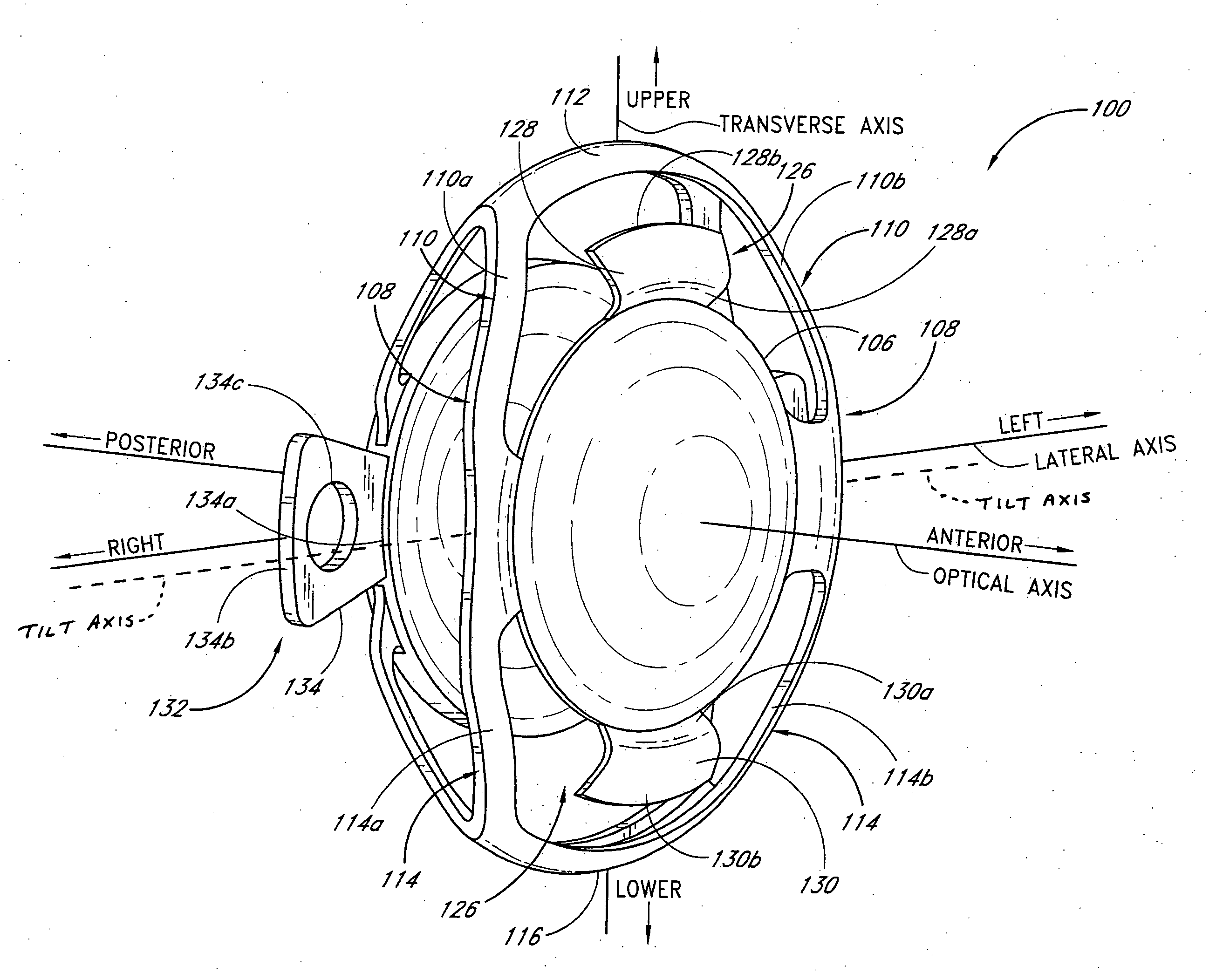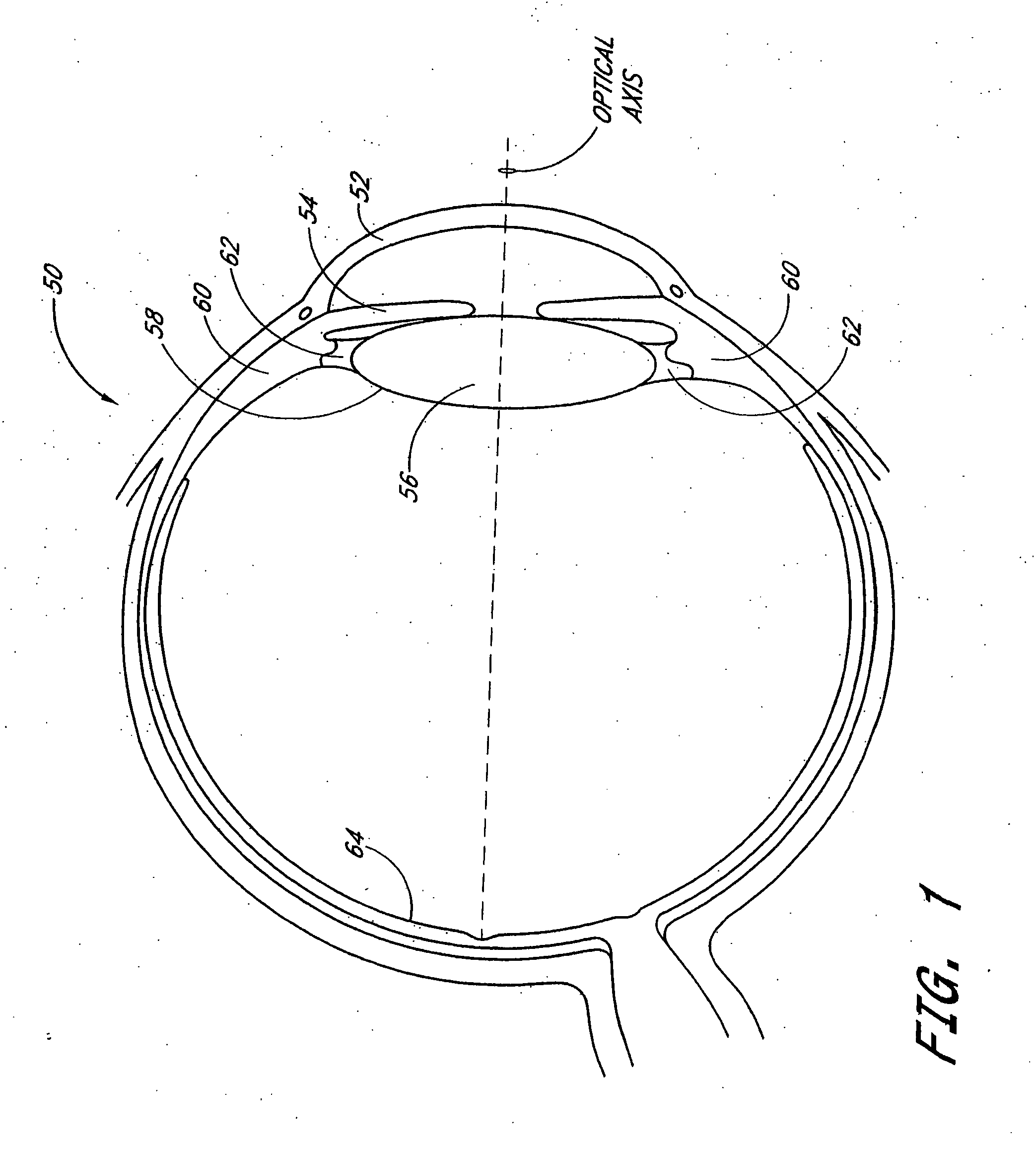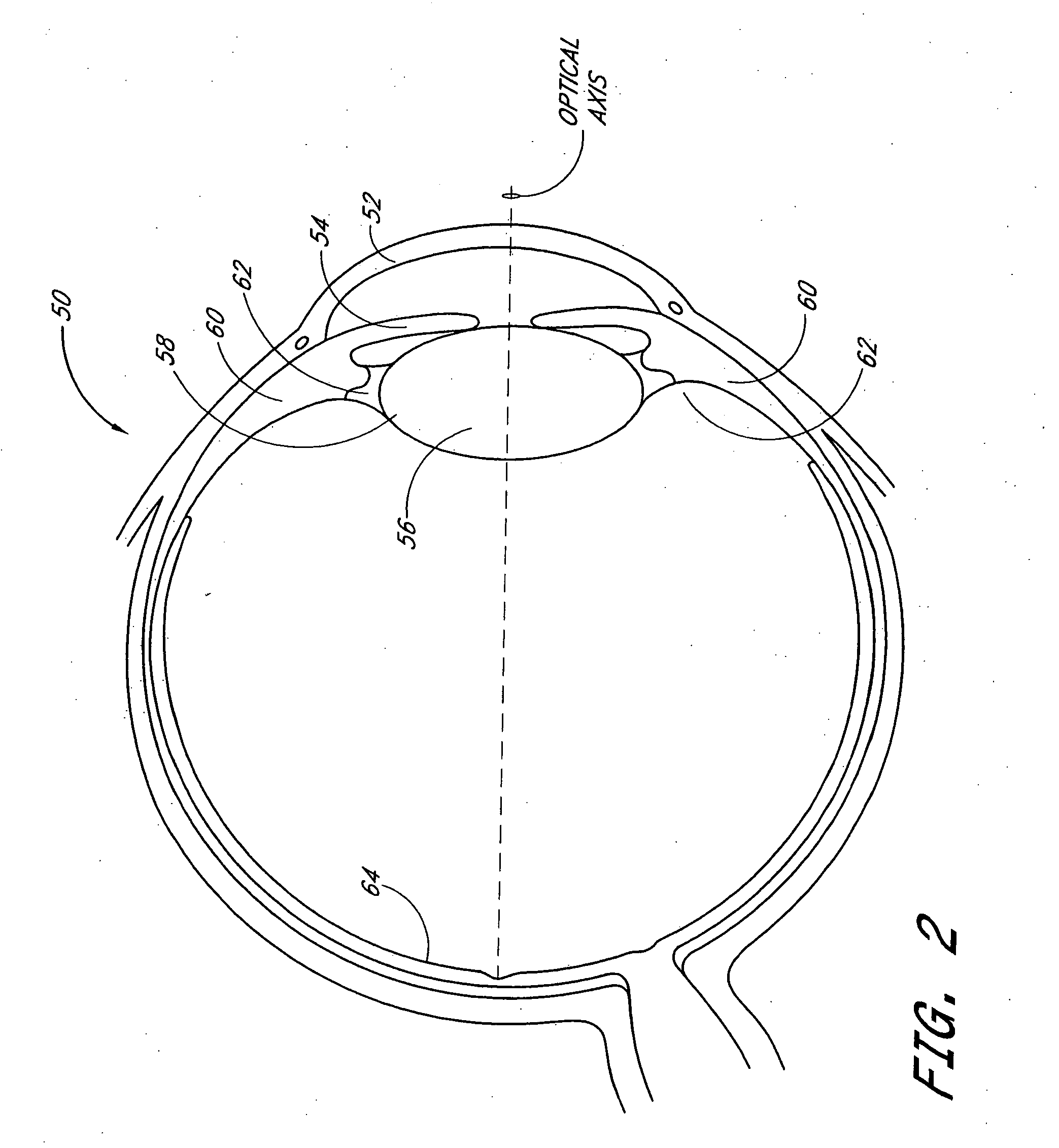Accommodating intraocular lens system with aberration-enhanced performance
a technology of aberration and lens system, applied in intraocular lens, medical science, prosthesis, etc., can solve the problem that fixed focal length lenses lack the ability of natural lenses to dynamically change the shape of lenses
- Summary
- Abstract
- Description
- Claims
- Application Information
AI Technical Summary
Benefits of technology
Problems solved by technology
Method used
Image
Examples
embodiment 200
[0122]FIGS. 26-28 depict another embodiment 200 of the intraocular lens. It is contemplated that, except as noted below, this embodiment 200 may, in certain embodiments, be similar to any one or more of the embodiments disclosed in FIGS. 3-17 and FIGS. 21-25.
[0123] In the illustrated embodiment, the distance 202 between the free end 128b of the first retention member 128 and the free end 130b of the second retention member 130 preferably is between about 6 mm and about 8 mm. In one embodiment, the distance 202 preferably is between about 6.9 mm and about 7.3 mm.
[0124] In the illustrated embodiment, the distance 204 between the free end 134b of the first distending member 134 and the free end 136b of the second distending member 136 preferably is between about 8 mm and about 14 mm. In one embodiment, the distance 204 preferably is between about 9 mm and about 11 mm. In one embodiment, the distance 204 preferably is between about 9.7 mm and about 9.9 mm.
[0125] As shown in FIG. 28, t...
embodiment 300
[0126]FIGS. 29-31 depict another embodiment 300 of the intraocular lens. It is contemplated that, except as noted below, this embodiment 300 may, in certain embodiments, be similar to any one or more of the embodiments disclosed in FIGS. 3-17, FIGS. 21-25, and FIGS. 26-28.
[0127] In the illustrated embodiment, the distance 302 between the free end 128b of the first retention member 128 and the free end 130b of the second retention member 130 preferably is between about 6 mm and about 8 mm. In one embodiment, the distance 302 preferably is between about 6.9 mm and about 7.3 mm.
[0128] In the illustrated embodiment, the distance 304 between the free end 134b of the first distending member 134 and the free end 136b of the second distending member 136 preferably is between about 8 mm and about 14 mm. In one embodiment, the distance 304 preferably is between about 9 mm and about 11 mm. In one embodiment, the distance 304 preferably is between about 9.7 mm and about 9.9 mm.
[0129] As shown...
embodiment 400
[0130]FIGS. 32-37 depict another embodiment 400 of the intraocular lens. It is contemplated that, except as noted below, this embodiment 400 may, in certain embodiments, be similar to any one or more of the embodiments disclosed in FIGS. 3-17, FIGS. 21-25, FIGS. 26-28, and FIGS. 29-31.
[0131] In the illustrated embodiment, the distance 402 between the free end 128b of the first retention member 128 and the free end 130b of the second retention member 130 preferably is between about 6 mm and about 8 mm. In one embodiment, the distance 402 preferably is between about 6.9 mm and about 7.3 mm.
[0132] As best shown in FIGS. 32 and 35, the retention members 128, 130 are preferably provided with openings 416. Likewise, the transition members 138, 140 are preferably provided with openings 418. These openings 416, 418 preferably permit fluid to flow between the interior of the capsular bag 58 and the portions of the eye anterior of the bag 58 as discussed further below.
[0133] In the illustra...
PUM
 Login to View More
Login to View More Abstract
Description
Claims
Application Information
 Login to View More
Login to View More - R&D
- Intellectual Property
- Life Sciences
- Materials
- Tech Scout
- Unparalleled Data Quality
- Higher Quality Content
- 60% Fewer Hallucinations
Browse by: Latest US Patents, China's latest patents, Technical Efficacy Thesaurus, Application Domain, Technology Topic, Popular Technical Reports.
© 2025 PatSnap. All rights reserved.Legal|Privacy policy|Modern Slavery Act Transparency Statement|Sitemap|About US| Contact US: help@patsnap.com



